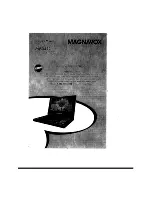
Intelligent stepless automatic controller for DC-fan
Seite/Page 110 - Kapitel/Chapter A: Intelligent stepless automatic controller for DC-fan
RE0201_V1_UserDoc_r10_eng.fm
Fischer Panda Datenblatt/Datasheet
A.1 Brief desciption
Temperature-dependent continuous speed controlling device for one or two DC-fans.
A.1.1 Function
The speed regulation of the fan is made by pulse tracing modulation (PWM) of the operating voltage. Pulse/no
pulse ratio becomes over an external temperature sensor (NTC resistance to attach at clamp 7 and 8) dependent
on the coolant temperature. Between the lower limit temperature (starting temperature) and the upper limit tempe-
rature the fan is controlled with 30 to 100% of the available operating voltage (PWM = 30% to 100%).
Potentiometer for adjustment concerning temperature and PWM behavior
Poti Start:
Adjusting the starting temperature (fan start-up). The start temperature is with left stop 60°C
and with right stop 80°C. Ex factory a starting tem perature of 70°C is adjusted (potentiometer
position: In the middle).
Poti Window:
Adjusting the temperature window: With the potentiometer "Window" the size of the window
between starting temperature and temperature for full number of revolutions (upper limit tem-
perature) can be adjusted. The temperature window can be adjusted from 5°C to 20°C. Is the
starting temperature adjusted to 70°C and the tempe rature window to 10°C thus the fan start-
up with 70°C and reaches the maximum speed with 80° C (upper limit temperature). Ex factory
a temperature window of 12,5°C is adjusted (potenti ometer position: In the middle).
Poti Freq:
Adjusting of the PWM frequency. Desired to many customers a potentiometer was added for
changing the PWM frequency. A selection of the frequency between approx.. 1,7 and 3,5kHz
is possible, which can serve for the avoidance of unwanted oscillation/resonances. Ex factory
a PWM frequency of 2 kHz is adjusted.
Function of the temperature sensors (NTC-resistance, extern und intern):
extern:
Over this temperature sensor the coolant temperature is collected. The starting temperature
(fan start-up) and the upper limit temperature can be adjusted by means of potentiometers
present at the plate. The PWM ratio starts with the exceeding of the starting temperature with
approx. 40% (for 2 seconds), so that the fan starts reliably. According to expiration of the 2
seconds the PWM ratio is determined by coolant temperature and potentiometer adjust. Since
the coolant temperature will not continue to rise in the 2 seconds, the PWM ratio will jump
back to the minimum value of 30%. At, from here, far rising coolant temperature, the PWM
ratio will then rise linear with the temperature. If the upper limit temperature is nearly reached,
the PWM ratio rose to 85%. By 85% to 100% PWM ratio with reaching the upper limit tempe-
rature switxching over is made by one step, in order to avoid very short turn-off times. Like-
wise switch-back is made with falling coolant temperature of 100% to 85% PWM ratio. If the
coolant temperature falls under the starting temperature, the minimum PWM ratio is not fallen
below of 30%, but remains constant. If the coolant temperature sinks approx. 3°C under the
starting temperature, then the fan is switched off completely. All data exclusively apply on use
of the temperature sensor type S891-100k of the manufacturer Epcos.
Summary of Contents for AGT 6000 PVMV-N
Page 1: ...Panda AGT 6000 PVMV N Super silent technology 24V 6kW Fischer Panda GmbH ...
Page 6: ......
Page 10: ...8 Socket wrench set Hexagon wrench keys ...
Page 92: ...Generator Failure Page 90 AGT 6000 PVMV N 12V_24V Chapter D Generator Failure ...
Page 100: ...Appendix Page 98 AGT 6000 PVMV N 12V_24V Chapter E Appendix ...
Page 102: ...Page 100 AGT 6000 PVMV N 12V_24V Chapter E E 6 Capsule Measurements ...
Page 106: ...VCS AGT U I Page 104 Chapter A VCS AGT U I VCS AGT UI_eng fm Fischer Panda Datasheet blank ...
















































